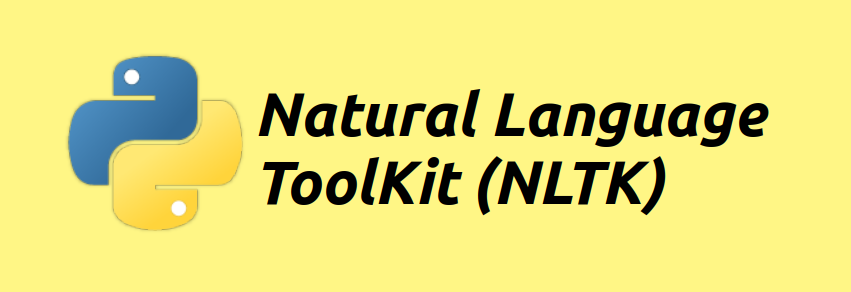In the ever-evolving landscape of AI and NLP tools, finding the ideal Jasper AI alternative is no small feat. With a multitude of options available, each boasting unique features and capabilities, it’s crucial to explore and analyze these alternatives comprehensively. This article aims to assist you in making an informed decision by delving deep into the features, limitations, and distinguishing factors of Jasper AI, along with presenting a diverse array of 12 alternatives to consider. So, if you’re in the market for a Jasper AI alternative, keep reading to discover the best fit for your needs.
Understanding Jasper AI

Features that Set Jasper AI Apart
Jasper AI has made a name for itself with its remarkable features. From content generation to language translation, it offers a suite of capabilities, including chatbot development and sentiment analysis. Its robust natural language processing abilities have garnered the attention of businesses and developers alike.
- Content Generation: Jasper AI’s content generation prowess is remarkable. It can craft engaging, informative, and SEO-friendly content, making it a go-to tool for marketers and content creators. The ability to generate high-quality, topic-specific content sets Jasper AI in a league of its own.
- Multilingual Support: The platform boasts excellent multilingual support, enabling users to work with various languages seamlessly. Whether you’re targeting a global audience or dealing with diverse linguistic requirements, Jasper AI stands out.
- Sentiment Analysis: Jasper AI can analyze sentiment in text, making it valuable for businesses looking to understand customer opinions and feedback. It’s not just about understanding words; it’s about comprehending emotions and reactions, a skill Jasper AI has mastered.
- Chatbot Development: The chatbot creation feature simplifies the process of building AI-powered virtual assistants for websites and applications. Jasper AI’s chatbot capabilities are a game-changer for enhancing user experiences and customer support.
Limitations of Jasper AI
While Jasper AI shines in many aspects, it’s essential to acknowledge its limitations.
- Cost: The cost of using Jasper AI can be a limiting factor, particularly for smaller businesses and individuals. The pricing structure may not be the most budget-friendly, and this is where Jasper AI alternatives come into play.
- Training Data: Like many AI models, Jasper AI’s performance depends on the quality and quantity of the training data it receives. This means that if you need highly specialized content or context, it may not always meet your expectations.
- Customization: Customization options may be limited, and advanced users seeking a high degree of control might find it lacking. For those who demand precise control over AI models, alternatives may offer more flexibility.
The Need To Look For A Jasper AI Alternative

When it comes to AI tools and platforms, Jasper AI has certainly made a name for itself. However, there are situations where exploring Jasper AI alternatives becomes a necessity. This section delves into the reasons why you might find yourself in search of a Jasper AI alternative.
1. Cost Considerations: Managing Your Budget
One of the primary drivers behind seeking a Jasper AI alternative is cost. While Jasper AI offers a robust set of features, it may not always align with your budget constraints. Businesses, particularly startups and small enterprises, often need to manage their finances judiciously. If the cost of Jasper AI outweighs the benefits it provides, it becomes imperative to explore alternatives that offer a more cost-effective solution. Whether you’re an individual or a company with budget limitations, the need for a more budget-friendly Jasper AI alternative can drive this quest.
2. Specialized Requirements: Tailoring AI to Your Needs
Jasper AI is undoubtedly versatile, but sometimes your project demands highly specialized AI capabilities. You might need a chatbot with extremely specific conversational abilities, content generation that adheres to unique industry standards, or sentiment analysis tailored to your specific domain. If your project requirements go beyond what Jasper AI can offer out of the box, it’s time to seek an alternative that allows for extensive customization. The need for an AI tool that can be precisely tailored to meet these unique requirements is a strong motivator for exploring Jasper AI alternatives.
3. Scaling Demands: Meeting Growing Workloads
As your projects and workload expand, so do your AI needs. Jasper AI, like any tool, has its limitations when it comes to scalability. If you find yourself in a situation where you need to process large volumes of data, support a rapidly growing user base, or handle complex language tasks at scale, the need for a Jasper AI alternative that can seamlessly scale becomes apparent. The capability to manage higher workloads without compromising performance and response times is a key factor in this scenario.
4. Integration Requirements: Aligning with Existing Ecosystems
Integration with your existing tech ecosystem is another reason to explore alternatives to Jasper AI. If your business relies on specific platforms or cloud services, you might prefer an alternative that seamlessly fits into your current setup. Jasper AI may not integrate as smoothly with certain ecosystems, making it essential to look for Jasper AI alternatives that offer this compatibility. Whether you use Microsoft technologies, Amazon Web Services, or Google Cloud, aligning your AI solution with your existing infrastructure can be a compelling reason to consider alternatives.
Commonly Used Jasper AI Alternatives

When it comes to Jasper AI alternatives, you’re spoiled for choice. Let’s take a deep dive into 12 alternatives that can fulfill your AI and NLP needs.
1. OpenAI GPT-3: The Versatile Powerhouse
OpenAI’s GPT-3 stands as a true giant in the world of natural language processing. Boasting a massive model size and continuous improvements, it’s renowned for its exceptional versatility. Whether you need a chatbot that speaks like a human, automated content generation, language translation, or text summarization, GPT-3 has got you covered. Its capabilities are continually expanding, making it an exciting choice for developers looking to push the boundaries of what’s possible with AI.
2. IBM Watson: The Cognitive Computing Champ
IBM Watson’s claim to fame lies in its cognitive computing capabilities. What sets it apart is its ability to understand, reason, and learn over time. This means it can adapt to ever-evolving scenarios and contexts. If you need a chatbot or virtual assistant that not only understands language but can actively learn and make decisions based on new information, IBM Watson is a top contender.
3. Google Cloud AI: Google’s NLP Arsenal
Google Cloud AI brings the tech giant’s vast resources and expertise in natural language processing to your fingertips. The Natural Language API and Dialogflow offer a wide range of AI capabilities. These tools are particularly strong in sentiment analysis, content classification, and chatbot development. Google’s knowledge and infrastructure support mean you’re working with a powerhouse in the NLP field.
4. Microsoft Azure AI: The Azure Advantage
Azure AI integrates seamlessly with Microsoft’s ecosystem and cloud services. If your business relies on Microsoft technologies, this is the perfect match. Services like Azure Text Analytics and Azure Bot Service provide advanced NLP capabilities, enabling you to create powerful chatbots, language-understanding applications, and more. The deep integration ensures a smooth experience for existing Microsoft users.
5. Amazon Lex: AWS Conversational Interface
Amazon Lex is an excellent choice for those who prefer to work with Amazon Web Services. Its conversational interface-building capabilities cater to both voice and text-based applications. The pay-as-you-go pricing model offers cost efficiency, and its integration with AWS services simplifies deployment and scalability. If you need a chatbot with an emphasis on voice interactions, Amazon Lex is the way to go.
6. ChatGPT: Conversational Expertise
ChatGPT, a sibling model to GPT-3, is laser-focused on conversational AI. It simplifies the process of creating chatbots and virtual assistants. If you’re looking for a tool to build engaging, context-aware chatbots for websites, applications, or customer support, ChatGPT is designed with this specific purpose in mind. Its emphasis on conversation ensures natural, fluid interactions.
7. Rasa: Unleash Your Chatbot’s Potential
Rasa is an open-source platform that empowers developers with fine-grained control over chatbot and virtual assistant development. What sets Rasa apart is the ability to customize every aspect of your chatbot, from the dialogue flow to NLP models. This level of control is ideal for businesses and developers who want a bespoke chatbot tailored to their unique requirements and industries.
8. Dialogflow: Google’s Conversational Solution
Dialogflow by Google Cloud simplifies the process of creating conversational applications with robust natural language understanding capabilities. Its tight integration with Google’s ecosystem ensures a seamless experience. Whether you’re building chatbots, voice assistants, or interactive web applications, Dialogflow offers an intuitive interface and robust language understanding to get you up and running quickly.
9. Wit.ai: Facebook’s Natural Language Toolkit
Wit.ai, now under Facebook’s umbrella, offers tools for advanced natural language understanding, ideal for building chatbots and voice assistants. Leveraging Facebook’s resources and expertise in AI, Wit.ai provides a versatile platform for understanding and responding to human language. Its deep integration with Facebook’s ecosystem opens up opportunities for social media-related AI applications.
10. Luis.ai: Microsoft’s Language Understanding
Part of Microsoft Azure, Luis.ai specializes in language understanding, making it a valuable choice for developers creating chatbots and language-understanding applications. Its deep integration with Microsoft’s cloud services and NLP capabilities means you have the backing of one of the tech industry’s giants. Luis.ai is perfect for businesses looking to create language-understanding applications with Microsoft technologies at the core.
11. SpaCy: Fine-Grained NLP Control
SpaCy, an open-source NLP library, is the tool of choice for developers seeking fine-grained control over their NLP tasks. Whether you need to perform text classification, named entity recognition, or linguistic analysis, SpaCy provides speed and accuracy. Its wide range of languages and seamless integration with Python make it an indispensable asset for NLP enthusiasts.
12. NLTK (Natural Language Toolkit): Researcher’s Delight
NLTK is a Python library that has gained popularity among researchers and developers. Its flexibility and extensive libraries provide a wealth of resources for working with human language data. Whether you’re an academic researcher or a developer looking to dive deep into NLP, NLTK offers a vast array of tools and resources to explore the intricacies of language.
Factors To Consider While Choosing The Perfect Jasper AI Alternative

Selecting the ideal Jasper AI alternative requires careful consideration. Here are some key factors to keep in mind:
1. Specific Use Case: Define Your Unique Needs
Selecting the perfect Jasper AI alternative begins with a clear understanding of your specific use case. AI and NLP tools vary widely in their capabilities. Whether you’re seeking content generation, chatbot development, sentiment analysis, or language translation, it’s crucial to define your exact needs. Are you building a chatbot to enhance customer support or a content generator for your blog? The more precisely you pinpoint your use case, the better you can match it with the right Jasper AI alternative.
2. Budget: Balancing Cost and Value
The budget is a critical consideration when evaluating Jasper AI alternatives. Prices can vary, and it’s essential to balance cost with value. Some alternatives offer free tiers or pay-as-you-go models, while others come with subscription fees. Consider not only the initial cost but also long-term expenses. If you’re on a tight budget, open-source options like Rasa and NLTK can provide cost-effective solutions. However, it’s vital to assess whether the pricing aligns with the features and capabilities you require for your project.
3. Technical Requirements: Match Expertise with Tools
Your technical expertise plays a significant role in your choice of a Jasper AI alternative. Some alternatives are designed with developers in mind, offering fine-grained control and customization options. Others are more user-friendly, making them accessible to non-technical users. Assess your team’s capabilities and comfort level with AI tools. If you have in-house developers who can work with complex APIs, you might opt for a tool like GPT-3 or SpaCy. Conversely, if you lack technical expertise, options like Dialogflow or Luis.ai provide user-friendly interfaces that simplify the implementation process.
4. Customization: Tailoring AI to Your Needs
Customization is a key factor for businesses and developers who require a high degree of control over their AI models. Consider whether you need a Jasper AI alternative that allows you to fine-tune the AI to your unique requirements. Tools like Rasa, SpaCy, and Luis.ai excel in this regard, providing extensive customization options. If your project demands a chatbot or virtual assistant with specific behaviors, language understanding, or branding, the ability to tailor the AI to your exact specifications becomes crucial.
5. User Support and Documentation: Navigating Challenges
Access to user support and comprehensive documentation can significantly impact your experience with a Jasper AI alternative. When challenges arise, or you need assistance with implementation and optimization, having reliable support can make all the difference. Evaluate the level of user support provided by the alternative and the availability of thorough documentation. Tools like IBM Watson and Azure AI often offer robust user support, while open-source options might rely on community-driven documentation and forums. Choose an alternative that aligns with your preferences for assistance and resources.
Conclusion
In the quest for a Jasper AI alternative, the key is to consider your specific requirements, budget constraints, technical expertise, customization needs, and support resources. The alternatives presented in this article cover a wide spectrum of capabilities, making it easier to find the perfect match for your needs. Whether it’s OpenAI’s GPT-3, IBM Watson, or any other mentioned Jasper AI alternative, you’re well-equipped to make an informed decision. Happy exploring, and may you find the perfect AI tool to fuel your projects.









